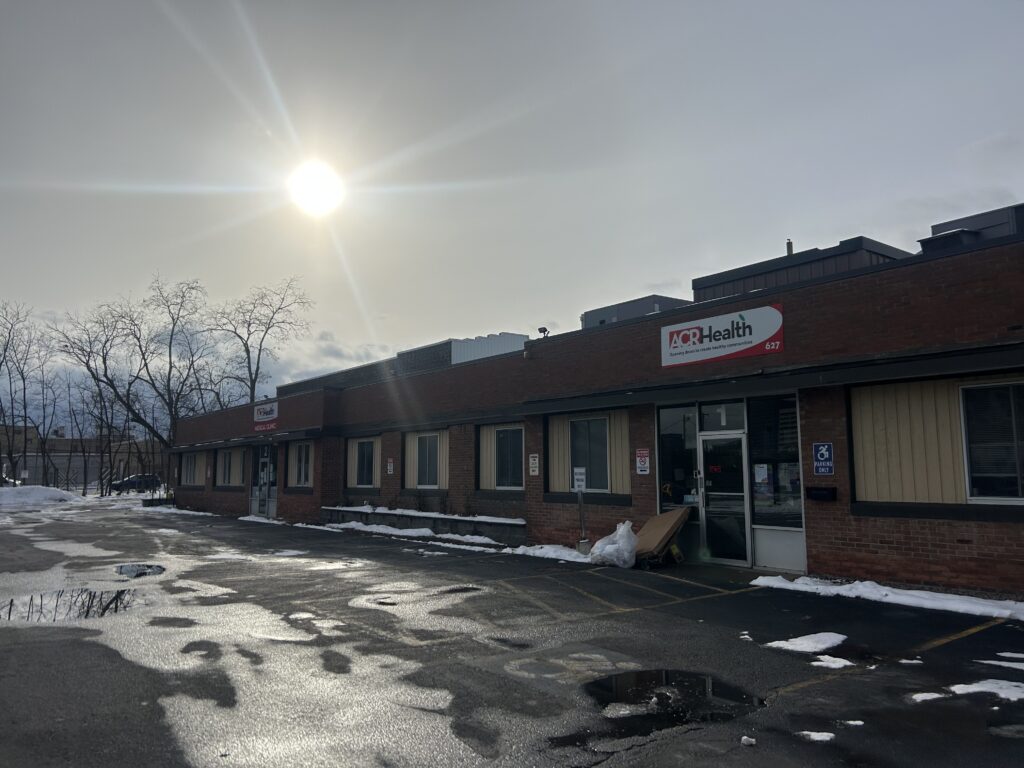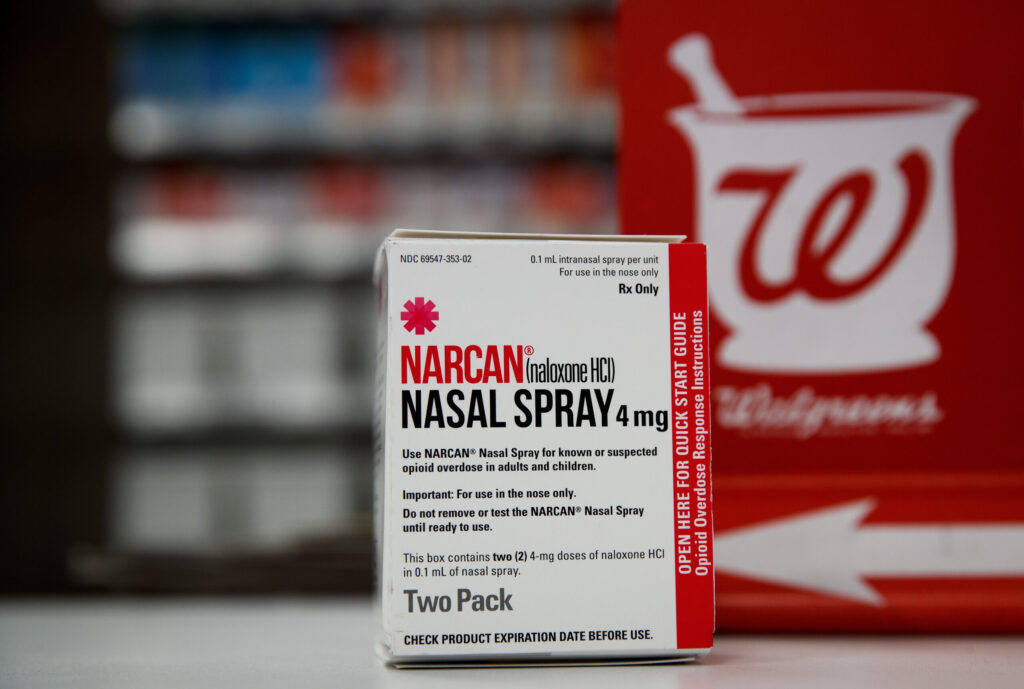Narcan is changing Central New York’s approach to overdoses
Narcan is changing Central New York’s approach to overdoses
The FDA approved Narcan in March of 2023 to be sold over-the-counter. Syracuse and its surrounding areas are seeing its benefits in real time.

Roberto Gonzalez’s first life ended in 2011 when a group of EMTs pronounced him dead on the cold floor of an ambulance in Onondaga County.
The already-confined space was overcrowded, as Gonzalez’s partner begged to accompany him to the hospital. She’d been crouched in the corner of the vehicle when the EMTs administered a single dose of Narcan. Back then, EMTs were told one dose would either reverse an opioid overdose in a few seconds or not at all. When nothing happened, they noted Gonzalez’s time of death for future paperwork.
Gonzalez’s partner refused to accept this. “Keep trying!” she screamed, over and over until her voice became sore. “Keep trying! Keep trying!”
As a last resort, and to appease her, the EMTs decided to administer a second round of Narcan, a move considered ineffective by medical professionals before 2012. Within moments, Gonzalez’s breathing was restored.
“If they would have gone by what they knew, the only information out there, I wouldn’t be here to talk to you today,” says Gonzalez now.
Naloxone is a nasal-spray medication that was approved in March of 2023 to be sold over-the-counter under the brand name Narcan. The spray is an opioid antagonist: instead of counterbalancing symptoms to overcome the effects of an overdose, naloxone works by blocking opioid receptors on the brain altogether and restoring breathing, reversing an overdose in two to three minutes.
After being revived by EMTs, Gonzalez made a final, and successful, attempt to get sober, and pledged to spend his “second life” helping other addicts do the same. Now the Director of Harm Reduction and Prevention for ACR Health, Syracuse’s largest harm reduction program, Gonzalez has seen firsthand how Narcan training has become more accessible to those outside the healthcare system.
“The training was very similar to EMT training and first aid crisis response,” says Gonzalez. “Now fast-forward almost ten years: you need Narcan? Here you go.”
The United States entered a deadly new wave of the opioid crisis in 2017, and the death toll is higher than ever: opioid-related overdoses have been steadily increasing for decades, and this wave – dubbed the “era of overdoses” – has witnessed the highest number of deadly overdoses in the country’s history. Like many American communities, Onondaga County has experienced an increase in opioid-related deaths since 2012, hitting a record high in 2021 with 186 unintended overdoses. Between 2010 and 2017, illegally manufactured fentanyl – a synthetic opioid approved by the CDC for severe pain – began showing up in cocaine, heroin, methamphetamine and other illicit substances, with many drug users not even aware of the fentanyl cut into their own supply. With an ever-growing mortality rate, public health officials pushed the FDA to approve Narcan for prescription use in 2015, but its price rose dramatically as demand went up, peaking at $150 in 2016.
America’s quietly radical experiment with destigmatizing addiction is happening across the country – it’s called harm reduction, where independent organizations attempt to reduce the potential dangers of drug use by providing safe materials to take drugs and offering free support.
Gonzalez first became a peer volunteer for ACR Health’s Utica division in 2011, during the first six months of its syringe-exchange program. He saw ACR receive its first-ever shipment of Narcan in 2014, just a few boxes of nasal spray kept under lock-and-key. Now, anyone can walk into 637 West Genesee Street and get a free two-dose supply of Narcan, no questions asked. And rather than requiring an hours-long training intended for medical professionals, most harm reduction organizations now show a 30-minute PowerPoint before giving out the medication.
The pandemic was a harrowing time for opioid abuse: from June 2020 to June 2021, nearly 100,000 Americans died in drug-related overdoses, by far the most in a single year since the opioid crisis began in the 1990s. Dr. Dessa K. Bergen-Cico, the coordinator of Syracuse University’s Addiction Studies program, believes there are two key factors to the current overdose crisis.
“One: people, because they’re isolated, were more likely to be using alone in 2020, so nobody would find them and administer naloxone,” says Bergen-Cico. “And two: fentanyl really took off mid-2015 to 2016, so a huge uptick of the inflow makes overdosing much more common.”
Commonwealth Place, a brick building covered in windows, is the place where Nancy Keefe Rhodes drives multiple times a week after her day job as a film professor. It is also an inpatient rehabilitation center owned by Crouse Hospital, housing an extensive Opioid Treatment Program (OTP) as well as other substance abuse services. Rhodes is a per-diem counselor and social worker for recovering addicts, and views Narcan administration as a normal part of her job: “When you have to do it over and over, you just know what to do.”
As a licensed medical professional, Rhodes is required to give Narcan training to all of her patients once a month. She jokes that the sole downside to widespread Narcan training is the daunting amount of paperwork; Rhodes estimates that she fills out ten documents for every patient receiving Narcan.
“The paperwork requires crazy fine details, like In what room of the house did they overdose in?” says Rhodes. “New York state has taken evidence-based treatment to an extreme degree with this, because they have to justify spending this money to make Narcan so widely available. And they’re undoubtedly responding to insurance companies not wanting to fund all this inpatient treatment.”
When walking down Commonwealth Place’s hallways, Rhodes recognizes many faces; less than half of her first-time patients get clean and sober on their first effort, so she’ll see certain people “half a dozen times before it really takes hold, and they really buckle down.” Narcan administration is just one of many harm reduction efforts that encourages saving lives over moral judgements.
“It’s not a failure to relapse; it’s part of every addict’s story,” says Rhodes. “And that’s why we give Narcan, because we recognize a way that we can help people and keep them from dying by overdose.”

The Syracuse neighborhood of Lakefront is the heart of Syracuse’s illicit-drug trafficking; it’s also quite windy, owing to Interstate 81’s many overpasses cutting through streets and creating minor wind tunnels. An electronic sign hangs on the porch of a two-story home, flashing “TRUMP WON” over and over again in a news-style loop. A green overpass with the graffitied statement “PRACTICE NON VIOLENCE” leads to Spencer Street, the building that houses Prevention Network, one of Syracuse’s two largest harm-reduction organizations.
Prevention Network takes a different approach than ACR Health. Despite being in Lakefront, Prevention Network focuses its harm reduction on educating those who don’t see overdoses firsthand; ACR Health focuses on addressing active users, homeless people and other at-risk members of the population.
M.J. Mattiaccio’s office is chock-full of Disney memorabilia from his time as a concierge and resort operations specialist at Magic Kingdom. After moving to be closer to family in Syracuse, Mattiaccio got his first job in harm reduction at Prevention Network, and now runs its state opioid response team. Mattiaccio emphasizes how receptive Syracuse residents have been to Narcan training in recent months: “Everybody comes in for Narcan, not just those struggling with addiction.”
Naloxone has been widely used in emergency overdose situations since 1961, but a lack of public research relegated it to hospitals and paramedics. And it was not until Narcan’s FDA approval that upstate New York harm reduction groups had the funding to distribute naloxone en masse.
Cayuga Addiction Recovery Services, a residential and outpatient rehabilitation center for Ithaca residents, also began an Opioid Overdose Prevention Program in September of 2023.
“Our opioid treatment program began the OOPP to make lifesaving naloxone more readily available locally, as well as to train more potential responders through their workplaces,” says Brad Walworth, the Communications Manager for CARS. “This has been such a great way to reach more people.”
Trevor Croff, a recent graduate of Syracuse University’s Public Health program, used the FDA’s approval of Narcan as an opportunity to train students, especially those who had yet to see the devastating effects of opioid abuse.
“I saw the prevalence of nightlife in Syracuse, particularly in Greek life, and with that, the prevalence of recreational drug use,” says Croff. “With the rise of fentanyl and ‘shoot’ drugs, Narcan just seemed like a really relevant thing, specifically for Syracuse University.”
The university’s Barnes Center offers 24-hour sexual violence crisis counseling, as well as non-urgent substance abuse counseling services. Bergen-Cico ran both services during the first wave of the opioid epidemic, and witnessed firsthand the connection between mental health and overdose.
“In September, I would see a first-year student who was sexually assaulted, and then in February, I’d see that same student for substance abuse counseling,” says Bergen-Cico. “So really, very clearly, you’re watching the same person coming through two different doorways.”
According to Mattiaccio, Prevention Network gives out free fentanyl testing strips for drug users to check their supply.
“Fentanyl is easier to produce and traffic,” says Bergen-Cico. “You don’t have to have acres and acres of crops to harvest and process; it’s lab-based.”
Anne Milgram, who led the Drug Enforcement Administration under former President Joe Biden, announced at a 2024 summit that for the first time since 2018, the FDA was seeing a remarkable drop in overdose deaths; addiction experts say declining rates are a combination of fentanyl potency weakening and wider distribution of Narcan.
“As far as Narcan itself, I think it’s right where it needs to be,” says Gonzalez. “What needs to happen is education, awareness and information spreading; it needs to get out to more people to save lives.”
While their harm reduction programs have different approaches, both Gonzalez and Mattiaccio agree: many people in Onondaga County, at-risk and not, want to prevent addiction.
“More people want to do good than not,” says Mattiaccio. “Now that the community has that knowledge, we’re trying to sustain it.”
